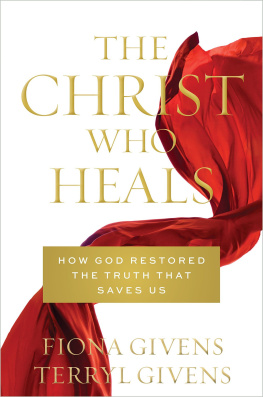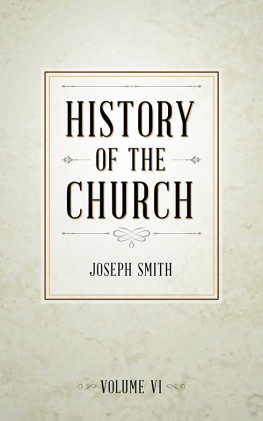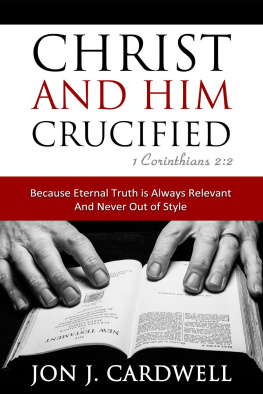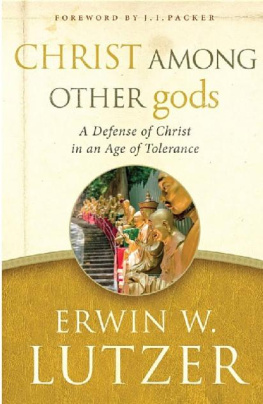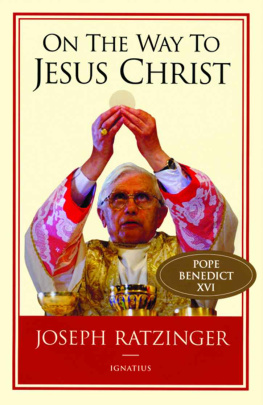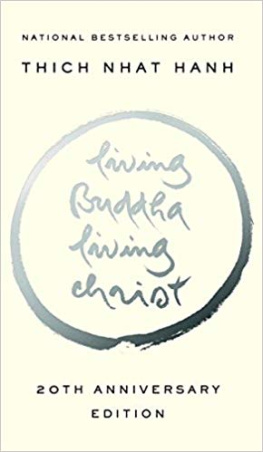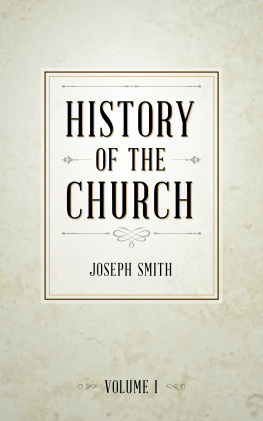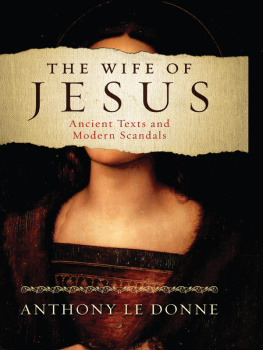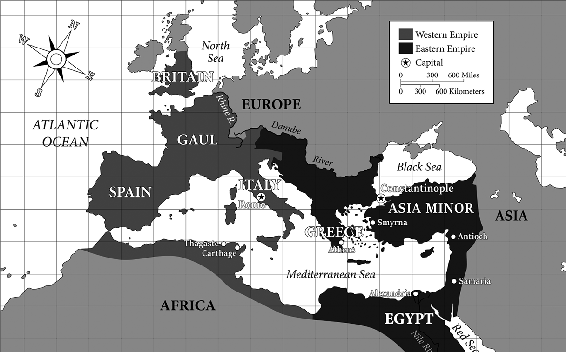
Also by Terryl and Fiona Givens
The God Who Weeps:
How Mormonism Makes Sense of Life
The Crucible of Doubt:
Reflections on the Quest for Faith
2017 Fiona Givens and Terryl L. Givens
All rights reserved. No part of this book may be reproduced in any form or by any means without permission in writing from the publisher, Deseret Book Company, at permissions@deseretbook.com or P. O. Box 30178, Salt Lake City, Utah 84130. This work is not an official publication of The Church of Jesus Christ of Latter-day Saints. The views expressed herein are the responsibility of the authors and do not necessarily represent the position of the Church or of Deseret Book Company.
Deseret Book is a registered trademark of Deseret Book Company.
Visit us at DeseretBook.com
Library of Congress Cataloging-in-Publication Data
Names: Givens, Fiona, author. | Givens, Terryl, author.
Title: The Christ who heals : how God restored the truth that saves us / Fiona Givens [and] Terryl Givens.
Description: Salt Lake City, Utah : Deseret Book, [2017] | Includes bibliographical references and index.
Identifiers: LCCN 2017040434 | ISBN 9781629723358 (hardbound : alk. paper)
Subjects: LCSH: Plan of salvation (Mormon theology) | Jesus ChristMormon interpretations. | Atonement. | Restoration of the gospel (Mormon doctrine) | The Church of Jesus Christ of Latter-day SaintsDoctrines. | Mormon ChurchDoctrines.
Classification: LCC BX8643.S25+ | DDC 230/.9332dc23
LC record available at https://lccn.loc.gov/2017040434
Printed in the United States of America
Publishers Printing, Salt Lake City, UT
10 9 8 7 6 5 4 3 2 1
Book design 2017 Deseret Book Co.
Art direction: Richard Erickson
Design: Heather G. Ward
Cover photo Jag_cz/Shutterstock.com
To Peter
This is the company I should like to find in heaven. Not those flaccid sea anemones of virtue who can hardly wiggle an antenna in the turgid waters of negativity.
Winston Churchill
He... healed them that had need of healing.
Luke 9:11
Contents
Setting the Stage
By 285 AD the Roman Empire had grown so vast that it was no longer feasible to govern all the provinces from Romethe capital city. The fifty-first Roman Emperor, Diocletian, therefore divided the empire into halves, with the Western portion governed from Rome and the Eastern governed from Byzantium (later renamed Constantinople after the Emperor Constantine). The division of the Roman Empire into those two halves, as depicted on the map opposite, would later correspond to the formal division of the Western and Eastern Churches in 1054, led from Rome and Constantinople respectively.The loss of the gospels plain and precious truths was more rapid, and more severe, in the Western Church. In what follows, we will be drawing both parallels and distinctions with several of the Church Fathersor influential teachers, bishops, and writers of the first Christian centuries. In many cases, with Eastern Fathers in particular, we will see familiar antecedents of Restoration teachings that either survived from the primitive Church or were inspired independent pronouncements. While the Reformation may have ushered in religious diversity and pluralism, its major figures in many cases further deepened the gulf separating Western Christianity from the coming Restoration message.
We include here a cast of characters to help readers become more familiar with the lives of some of the men and women whose contributions are vital to an understanding of the healing Christthe Christ of the Restoration.
Map created by Mike Odum and Darko Medenica
Division of the Roman Empire into Western and Eastern halves, around 285 AD.
Cast of Main Characters
Western Fathers
Justin Martyr
(100165 AD, Samaria)
Born into a pagan family near Jacobs Well, Justin was an avid student of Greek philosophy before his conversion at about the age of thirty. His training prepared him to be one of the Churchs first great apologists, defending Christians from false charges and defamation. Next to God we worship and love the Word,... since also He became man for our sakes, that, becoming a partaker of our sufferings, He might also bring us healing. Refusing to sacrifice to idols, he was beheaded with fellow Christians.
Tertullian
(160220 AD, Carthage)
With Tertullian we find two tragic innovations. He is the first to espouse a doctrine of original sin (Every soul, then, by reason of its birth, has its nature in [a fallen] Adam until it is born again in Christ; moreover, it is unclean... and because unclean, it is actively sinful); and he is generally understood to take a position against philosophy and rationality in general as applied to religion (what has Athens to do with Jerusalem?; and it is by all means to be believed because it is absurd [ ineptum ]). He parted ways with the institutional Church when he opted to support a movement (the Montanists) that affirmed the gift of continuing prophecy.
Augustine
(354430 AD, Thagaste [modern Algeria])
Augustine had one of the most dramatic conversions in Christian history, which he wrote about in his masterful Confessions . He became a bishop, an enormously prolific writer, and one of the primary shapers, after Paul, of the Christian traditionat least in the West. He initially supported the doctrine of preexistence, but changed his position later in life. And he initially defended freedom of the will, but ultimately decided it was incompatible with his defense of grace. His embrace of original sin entrenched the doctrine firmly in Western Christianity. He could write movingly about the innate yearning of all for the Divine Presence: our heart is restless until it repose in thee.
Pelagius
(360418 AD, Britain?)
Little is known about this British monk, except that he was a highly influential writer. Upon his arrival in Rome he took a strong stand against Church teachings on original sin, infant baptism, and predestination, preaching that free will as well as grace was necessary for salvation. The man who hastens to the Lord, and desires to be directed by him, that is, makes his own will depend upon Gods... does all this by the freedom of the will. Unsurprisingly, he incurred the wrath of Augustine and the condemnation of a Church council in 418 AD.
Eastern Fathers
Ignatius of Antioch
(ca. 35ca. 110 AD, modern Turkey)
A bishop of Antioch when a pogrom against Christians was launched in 110 AD, Ignatius was arrested and taken to Rome to be torn apart by wild animals in the arena. A writer of tender letters to early members and Church leaders, Ignatius urged forgiveness, kindness, and unity in the flock. God appeared in the likeness of man unto newness of everlasting life; and that which had been perfected in the counsels of God began to take effect. Thence all things were perturbed, because the abolishing of death was taken in hand.
Polycarp
(69156 AD, Asia Minor)
It is reputed that Polycarp, the Bishop of Smyrna (in present-day Turkey), was taught by John the Revelator. According to an early reminiscence, Polycarp reported his intercourse with S. John and the rest of the apostles who had seen the Lord, and how he used to mention their words, and what the things were that he had heard from them.
Irenaeus
(130202 AD, Asia Minor)
Irenaeus was one of the earliest expounders of the Christian faith, and he wrote with authority. He remembered with awe the days in which he sat in the place where... Polycarp used to sit and discourse, and how he listened eagerly to the disciple of John and made notes of what he heard, not on paper, but in my heart.
Next page
